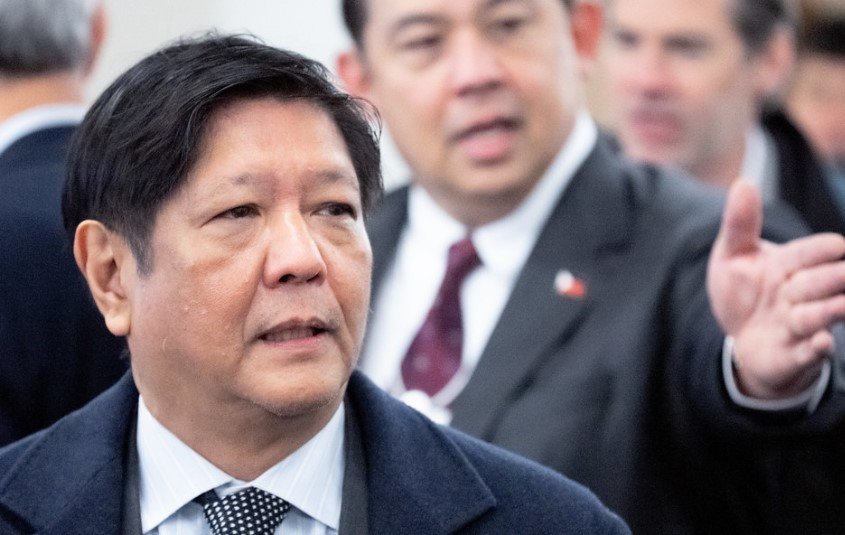President Ferdinand Marcos Jr. is turning up the heat on government agencies, demanding swift action to ensure schools across the country finally get reliable electricity and internet. With the 2025–2026 academic year now underway, his administration is shifting its focus to bridging the glaring digital and infrastructure gap that still hampers education, especially in far-flung areas.
After a visit to Epifanio delos Santos Elementary School in Manila on Monday, Marcos made it clear: access to power and connectivity isn’t optional anymore—it’s urgent.
Only 60% of Schools Online, Power Still a Bigger Hurdle
Right now, just 60 percent of public schools nationwide have any form of internet access. That figure barely moved over the last few years despite the increasing reliance on digital tools in classrooms.
But internet isn’t the only challenge. Marcos admitted the more serious issue is power—or the lack of it.
In some places, teachers still use chalk and blackboards not by choice, but because there’s no electricity to power computers or even basic lighting. The President said fixing that is step one.
“We can’t just talk about online learning or tech upgrades if there’s no electricity to begin with,” he told reporters. “That’s the real problem. So that’s what we’ll fix first.”

Focus on Isolated and Underserved Areas
The new directive specifically emphasizes prioritizing GIDAs—Geographically Isolated and Disadvantaged Areas—where the situation is often dire. Some schools still run on generators. Others operate without any stable power source at all.
This isn’t just about catching up. For many of these communities, it’s about finally being included.
Marcos says the government now has better tools to close that gap. Satellite technologies, mobile internet towers, solar energy systems—these aren’t futuristic ideas anymore. They’re accessible, and more importantly, scalable.
One sentence, one point.
He stressed that the Department of Information and Communications Technology (DICT) and Department of Education (DepEd) must coordinate closely.
Agencies in the Spotlight
The marching orders are simple but sweeping. All relevant agencies must now rework their current infrastructure plans to put schools at the front of the line.
DICT, in particular, is being asked to speed up the rollout of internet connectivity. The Department of Energy and local electric cooperatives have also been looped in to address electrification.
Here’s what’s reportedly on the priority list:
-
Connect all schools in GIDAs to the power grid or viable off-grid alternatives like solar
-
Expand high-speed internet coverage to public schools with zero or weak access
-
Introduce redundancy systems to avoid outages
-
Reallocate budgets and manpower to fast-track timelines
This isn’t the first time an administration promised better access. But Marcos is framing it as foundational, not supplemental.
What the Numbers Say
For context, the Department of Education’s Basic Education Information System (BEIS) reported that as of June 2024, out of over 47,000 public schools:
| Infrastructure | Total with Access | % Coverage |
|---|---|---|
| Electricity | 37,250 | 79% |
| Internet | 28,220 | 60% |
| Potable Water | 39,700 | 84% |
That 21% of schools still lacking electricity translates to nearly 10,000 campuses. And it gets worse in places like Bangsamoro, parts of Mindoro, and isolated islands in the Visayas.
Some teachers there resort to printed modules and battery-powered radios. It’s survival-mode education.
Tech is Ready—But Bureaucracy Might Not Be
Despite the optimism around available technology, the rollout still faces the usual suspects: red tape, budget constraints, and uneven coordination between national and local agencies.
In 2022, the DICT launched a Free Public Internet Access Program. It made some progress—especially in urban areas—but failed to address remote schools effectively.
Things like permit delays, site assessments, and procurement bottlenecks slowed everything down.
President Marcos is now asking for more direct involvement from his office to break through the bureaucracy.
“We’ve already proven we can do it in some areas. Let’s not get stuck in process paralysis. We have to move,” he said.
Teachers and Parents React
Educators on the ground are cautiously hopeful. Many say they’ve heard promises like this before but are still waiting for actual change.
Marivic delos Santos, a teacher in Quezon province, says her school relies on patchy mobile signal to coordinate with DepEd.
“It’s not just about teaching online. Even our payroll systems, student records, everything depends on connectivity now,” she said. “Without it, we’re just stuck.”
Some parents echo the same frustration. Online enrollment systems break down regularly, forcing in-person visits that cost time and money.
One-line paragraph to keep rhythm natural.
Others are more skeptical.
“They keep talking about the internet. But our school has no working lights half the time,” said a father from Palawan. “Fix that first.”
What Happens Next?
The President’s directive isn’t tied to a specific timeline, but sources within Malacañang say agencies are expected to present updated rollout plans before the end of Q3 2025.
Budget hearings in Congress are also likely to spotlight this push.
Meanwhile, the Department of Education is expected to submit updated lists of schools most in need. Those lists will guide the deployment of new infrastructure projects.
Some insiders say Marcos may even propose a special budget allocation through the General Appropriations Act 2026 just for school electrification and connectivity.
If that passes, the rollout could finally get the legs it needs.








